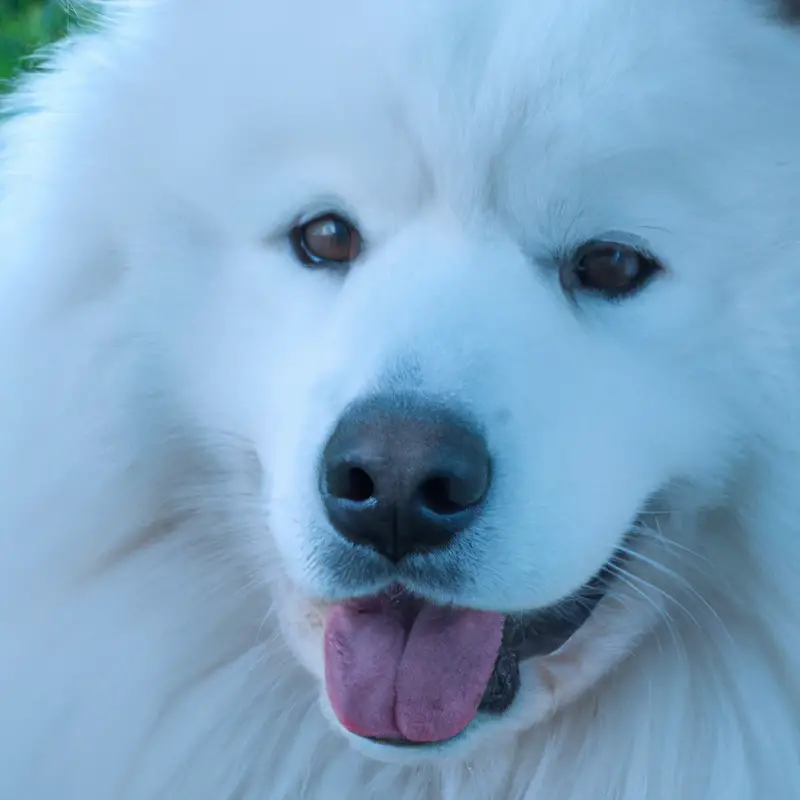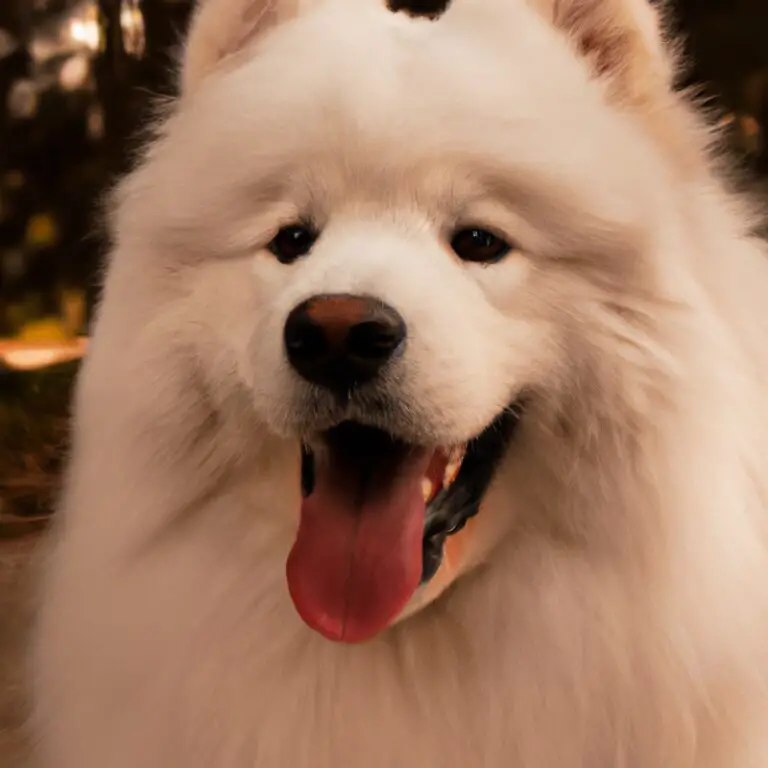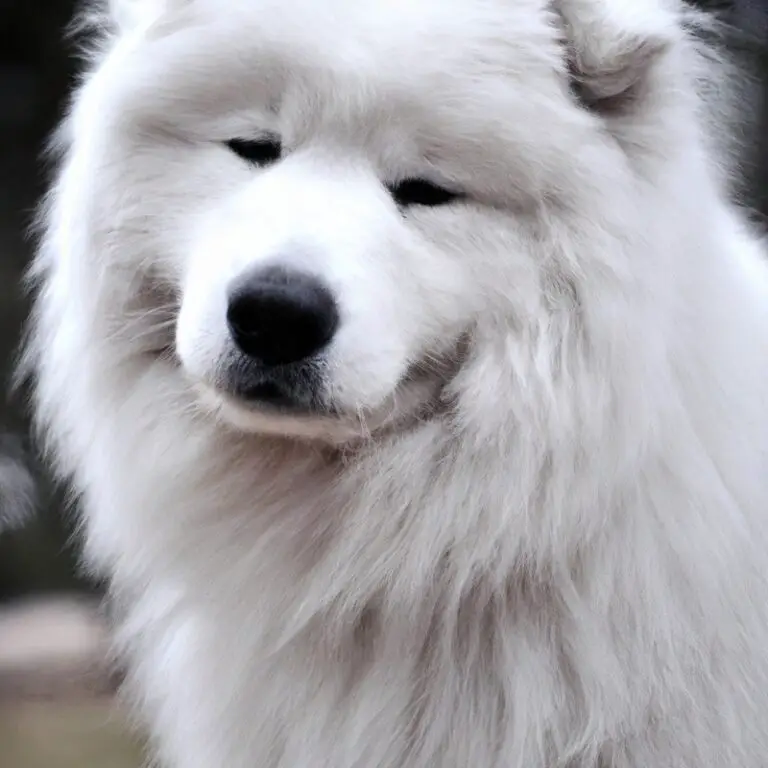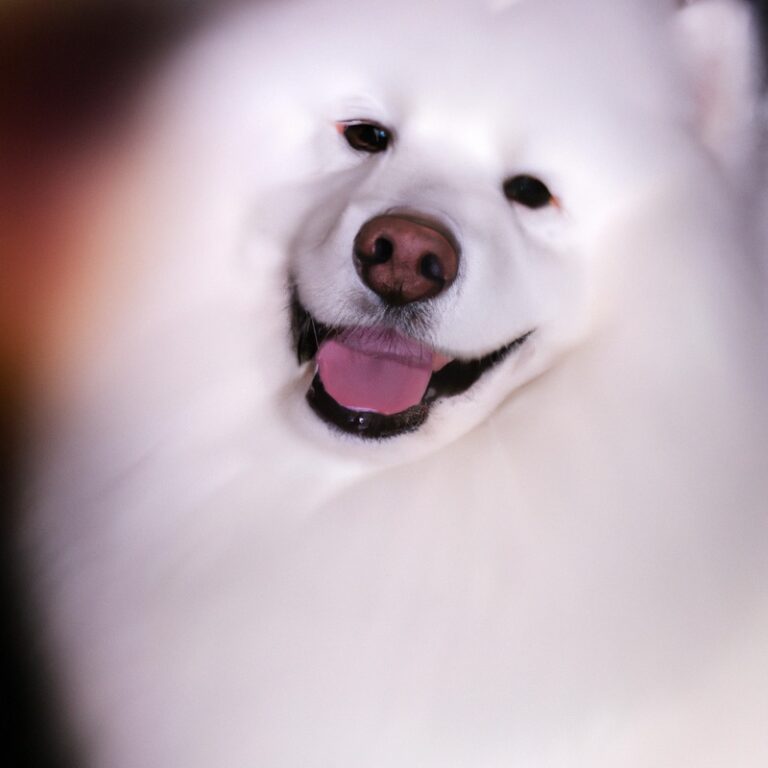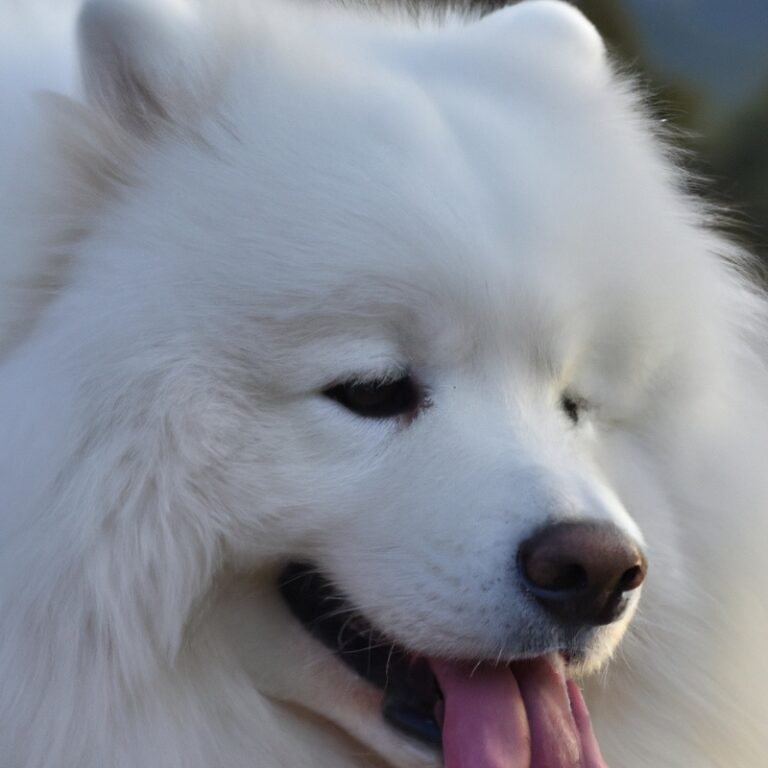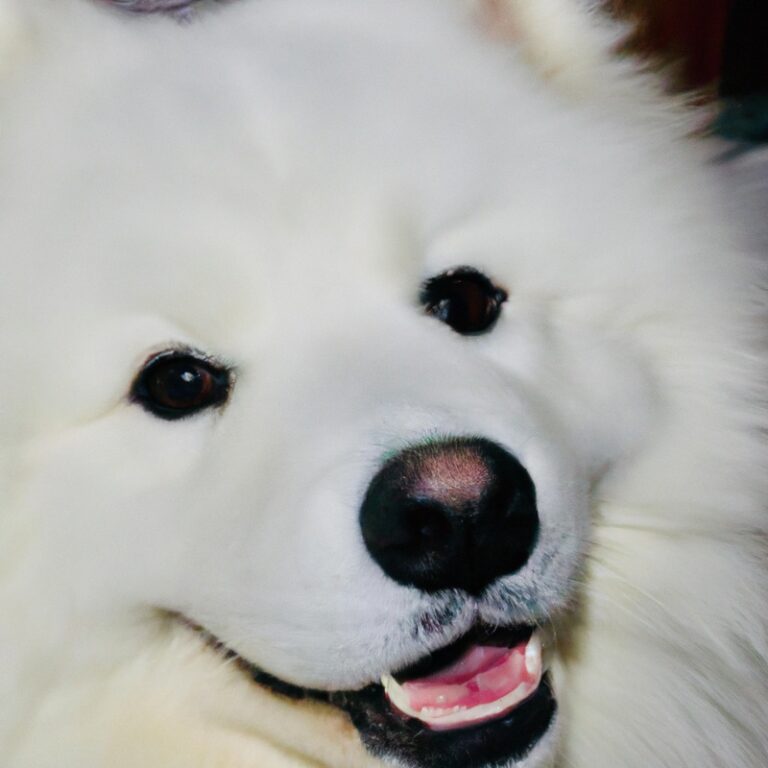How To Identify a Purebred Samoyed?
Key Takeaways:
- Coat color and texture are key indicators of a purebred Samoyed.
- Pay attention to the dog’s face shape and ear placement for breed confirmation.
- Look for specific behavioral traits in a Samoyed to determine its purity.
- Genetic testing can provide definitive proof of a Samoyed’s breed authenticity.
Are you in love with the beautiful and fluffy Samoyed breed? If so, you may be wondering how to ensure that the Samoyed puppy you’re considering is a purebred.
Well, you’ve come to the right place! As an expert in the world of Samoyeds, I know exactly what to look for when identifying a purebred Samoyed.
In this blog, I will guide you through the process, from understanding the breed’s history and characteristics to evaluating physical traits and behavior. We’ll also discuss the importance of finding a reputable breeder and verifying pedigree documentation.
So let’s dive in and unravel the secrets to identifying a purebred Samoyed!
| Features | Indicators of a Purebred Samoyed |
| Coat Color | White, biscuit, cream, or white and biscuit combination. No other colors. |
| Coat Texture | Thick, dense, and double-layered with a straight outer coat and a soft undercoat. |
| Eyes | Dark, almond-shaped, and moderately spaced apart. |
| Body Structure | Muscular and well-proportioned with a level topline, strong back, and deep chest. |
| Tail | Curled over the back or resting gently on the back. |
| Height | Male: 21 to 23.5 inches; Female: 19 to 21 inches at the shoulder. |
| Weight | Male: 45 to 65 pounds; Female: 35 to 50 pounds. |
| Temperament | Friendly, gentle, affectionate, and good with children. May be reserved with strangers. |
Understanding the Samoyed Breed
History and Origin of the Samoyed
The Samoyed breed has a rich history and fascinating origin. They are believed to have originated from the Samoyede people of Siberia, who used them as herding dogs and companions.
These friendly and loyal dogs were bred to withstand the harsh Arctic climate, with their thick double coat and bushy tail being distinct features.
Samoyeds were also valued for their sledding abilities and assistance in hunting. Over time, they gained popularity in Europe and eventually spread worldwide as beloved family pets.
Today, the Samoyed is recognized for its beauty, intelligence, and gentle demeanor.
Characteristics and Appearance of a Samoyed
Samoyeds are known for their striking appearance and unique characteristics. These fluffy dogs have a distinctive double coat, consisting of a dense, weather-resistant outer layer and a soft, thick undercoat.
They come in various shades of white, which adds to their pure and elegant appeal.
One of the most noticeable features of a Samoyed is their smile. These dogs have a permanent “Samoyed smile,” thanks to the upward curve of their mouth.
Their almond-shaped dark eyes are expressive and full of warmth.
Samoyeds are medium-sized dogs with a sturdy build. They have a well-balanced, strong frame and a straight back.
Their tails are plumed and carried over the back, adding to their regal appearance.
These lovable dogs are known for their friendly and gentle nature. They are always eager to please and are great with families, including children and other pets.
Their sociable spirit shines through, making them excellent companions and therapy dogs.
Overall, the characteristics and appearance of a Samoyed are what make them stand out. Their beautiful coat, happy smile, and friendly personality make them a beloved breed among dog lovers.
Key Differences between Purebred and Mixed Samoyeds
Purebred Samoyed vs. Samoyed Mix: Physical Features
Purebred Samoyeds are typically recognized by their standard physical features, which include a well-proportioned and sturdy body, a thick double coat that is usually white or cream-colored, and a plumed tail carried over the back.
They have black, almond-shaped eyes, a slightly rounded skull, and erect, triangular ears.
In contrast, Samoyed mixes can have a wider range of physical appearances, as they may inherit traits from other breeds.
This can result in variations in coat color, size, and body structure.
However, their friendly and sociable nature remains a common characteristic regardless of their physical features.
Purebred Samoyed vs. Samoyed Mix: Behavioral Traits
Purebred Samoyeds and Samoyed mixes can have different behavioral traits. Here are some key differences you may notice:
- Purebred Samoyeds tend to have predictable temperaments due to consistent breeding. They are known for being friendly, gentle, and good with children.
- Samoyed mixes, on the other hand, can inherit traits from other breeds, leading to more variation in temperament. It’s important to assess the specific mix to understand their potential behavior.
- Both purebred and mixed Samoyeds are typically sociable and enjoy being around people. However, the level of independence may differ, with purebreds often displaying more loyalty and being less prone to wander.
- Purebred Samoyeds have very high exercise needs due to their working heritage. They need plenty of physical and mental stimulation to stay happy and well-behaved.
- Samoyed mixes may have varying exercise requirements depending on the other breed involved. It’s important to consider the energy levels and exercise needs of all contributing breeds.
Remember, individual dogs can have unique personalities regardless of their breed or mix. It’s essential to provide proper training, socialization, and love to ensure a well-rounded and happy Samoyed companion.
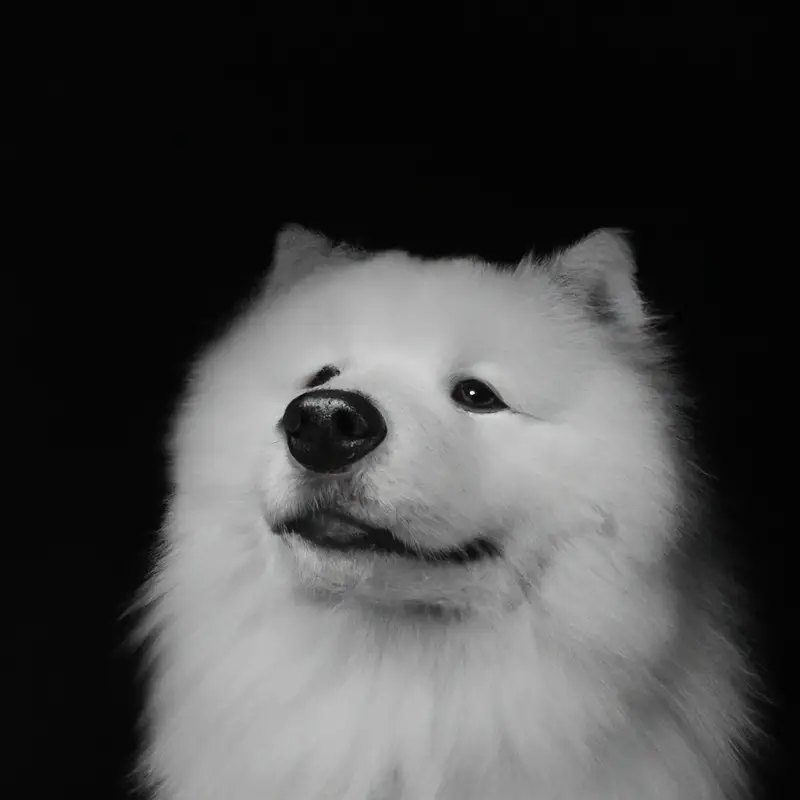
Researching and Finding a Reputable Breeder
Importance of Finding a Reputable Breeder
Finding a reputable breeder is vital when looking for a purebred Samoyed.
A reputable breeder ensures that the dog’s lineage is traceable, decreasing the risk of inherited health conditions.
They prioritize the well-being of their dogs and provide a nurturing environment for them.
Their knowledge and expertise will help guide you throughout the process of adopting and caring for a purebred Samoyed.
Be mindful of backyard breeders and puppy mills, as they prioritize profit over the health and welfare of the dogs they breed.
Choose a reputable breeder for a healthy and happy Samoyed companion.
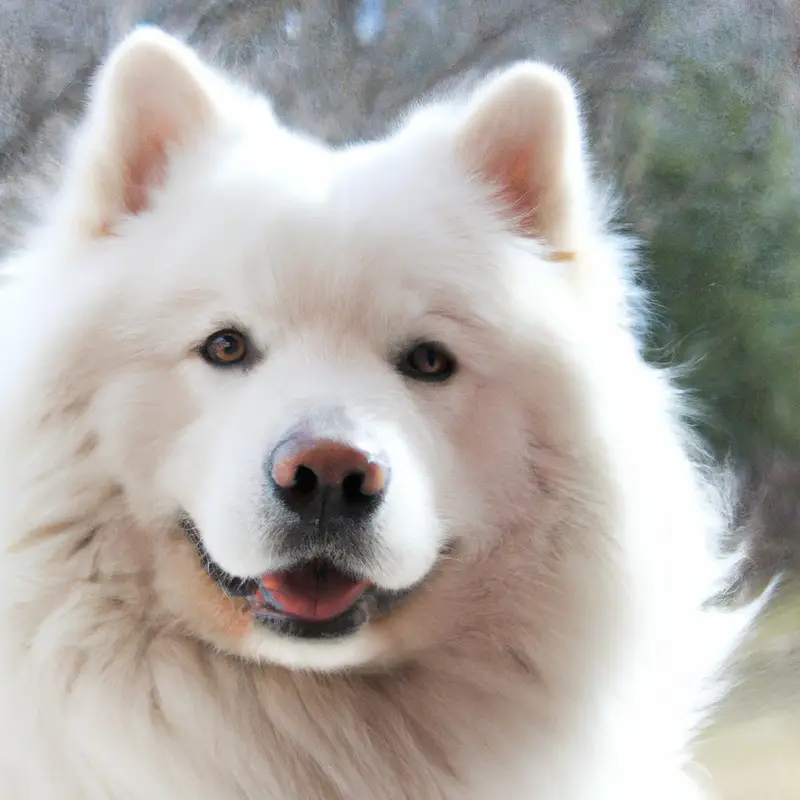
Questions to Ask a Breeder
When looking to buy a purebred Samoyed, it’s important to ask the breeder the right questions.
Here are some important ones to consider:
- Can I see the parents? Seeing the parents will give you an idea of the puppies’ potential appearance and temperament.
- How do you socialize the puppies? Proper socialization is crucial for a well-adjusted Samoyed, so make sure the breeder introduces the puppies to different people, animals, and environments.
- What health tests have been done? A reputable breeder should conduct health tests on the parents to ensure the puppies are free from genetic diseases.
- Can I get references from your previous customers? Talking to other owners who have purchased a Samoyed from the same breeder can give you insights into their experience and the quality of their dogs.
- Are there any guarantees or contracts? A responsible breeder will provide guarantees regarding the puppy’s health and offer a contract that outlines their responsibilities and yours.
- What support do you offer after I bring the puppy home? A good breeder will be available for guidance and support throughout the dog’s life.
Remember, don’t hesitate to ask any other questions that come to mind.
A reputable breeder will be happy to answer them and provide you with all the information you need to make an informed decision.
Examining Physical Traits of a Samoyed
Coat and Color
Coat and color are important characteristics when identifying a purebred Samoyed.
The Samoyed’s coat is double-layered, with a dense, soft undercoat and a longer, straight outer coat.
It’s crucial to note that the coat should be pure white or biscuit color, with no markings or patches of different colors.
Additionally, the purebred Samoyed’s coat should be clean and well-groomed, with no signs of excessive shedding or matting.
Pay close attention to these features to ensure you’re looking at a true Samoyed.
Body Structure and Proportions
A purebred Samoyed has a distinctive body structure and proportions that set it apart from other breeds.
The breed is known for its strong and sturdy build, with a straight and level topline.
Their bodies are well-balanced, with a deep chest and a proportionate head.
Samoyeds also have a moderately long neck and a high-set tail that curls over their back.
Additionally, their legs are straight and muscular, giving them a confident and agile gait.
These physical traits contribute to the unique and recognizable appearance of a purebred Samoyed.
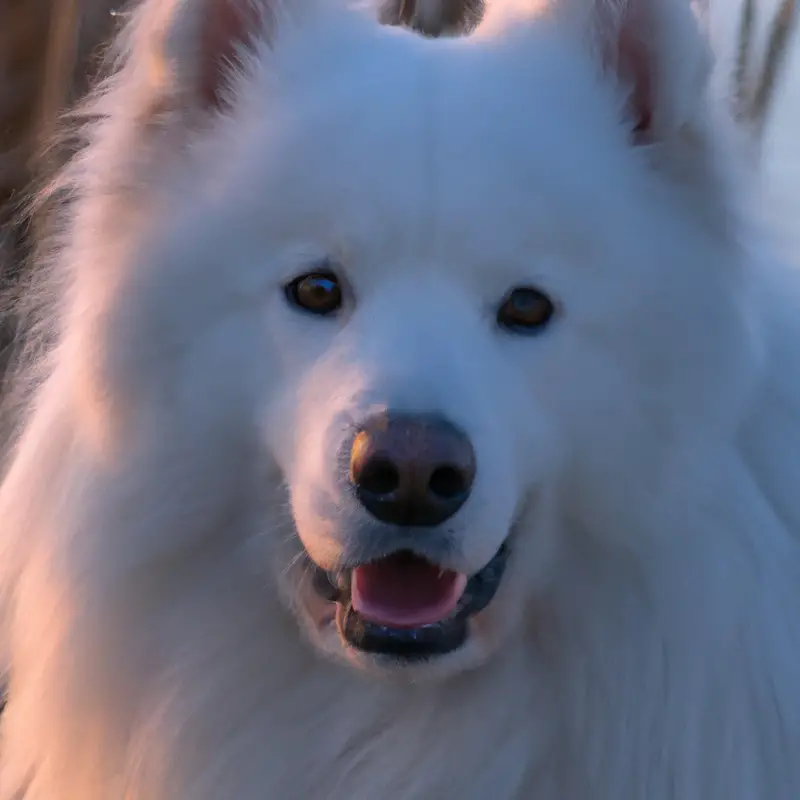
Evaluating Temperament and Behavior
Typical Samoyed Temperament
Samoyeds are known for their friendly and gentle temperament.
They are typically very good-natured and enjoy being around people, including children.
Samoyeds are also quite sociable and get along well with other dogs.
They are intelligent and eager to please, making them easy to train.
However, they can be a bit stubborn at times, so consistent and patient training is key.
Samoyeds are lively and energetic dogs, and they thrive when they have plenty of exercise and mental stimulation.
Overall, their loving and playful nature makes them wonderful family pets.
Signs of Negative Behavioral Traits
Signs of Negative Behavioral Traits in a Samoyed can include aggression towards people or other animals, excessive barking, destructive chewing, and excessive jumping on people.
It is important to address these behaviors early on through proper training and socialization.
Look for a reputable breeder who prioritizes temperament and behavior when selecting a purebred Samoyed.
Consider consulting with a professional dog trainer or behaviorist for assistance in addressing negative behaviors and promoting a healthy and well-adjusted pet.
Required Health Testing for Purebred Samoyeds
Common Health Issues in Samoyeds
Samoyeds are generally healthy dogs, but like any breed, they may be prone to certain health issues. Here are some common health problems that Samoyeds can experience:
- Hip Dysplasia: This is a genetic condition where the hip joints do not develop properly, leading to discomfort and arthritis.
- Progressive Retinal Atrophy (PRA: PRA is an inherited eye disease that can lead to a progressive loss of vision in Samoyeds.
- Hypothyroidism: This condition occurs when the thyroid gland doesn’t produce enough hormone, resulting in weight gain, lethargy, and skin problems.
- Diabetes: Samoyeds may be at a higher risk of developing diabetes, which affects their body’s ability to regulate blood sugar levels.
- Allergies: Some Samoyeds may be prone to allergies, including food allergies and environmental sensitivities.
- Joint issues: Samoyeds can develop joint problems such as arthritis or patellar luxation, which is when the kneecap slips out of place.
Regular check-ups with a veterinarian, a balanced diet, and proper exercise can help prevent or manage these health issues. If you notice any changes in your Samoyed’s behavior or health, it’s best to consult with a vet for proper diagnosis and treatment.
Recommended Health Tests for Samoyeds
To ensure the health and well-being of your Samoyed, it is recommended to conduct the following health tests:
- Hip Evaluation: This test helps identify any potential hip dysplasia, a common genetic disorder in Samoyeds.
- Eye Examination: Regular eye exams can detect hereditary eye conditions such as progressive retinal atrophy (PRA and cataracts.
- Cardiac Evaluation: A cardiac evaluation evaluates the heart for any abnormalities or cardiac diseases.
- Thyroid Function Test: This test assesses the thyroid gland’s function and helps detect thyroid-related disorders like hypothyroidism.
Regularly monitoring your Samoyed’s health through these recommended tests can help catch any potential issues early on, allowing for prompt treatment and ensuring your dog’s overall well-being.
Verifying Pedigree and AKC Registration
Importance of Pedigree Documentation
Pedigree documentation is vital when verifying the purity of a Samoyed. It serves as a reliable record of the dog’s lineage, tracing back several generations.
This documentation includes information about the dog’s ancestry, such as the names of its parents and grandparents.
By having access to pedigree documentation, you can ensure that you are getting a genuine purebred Samoyed, as it validates their heritage. It also adds value to the dog when it comes to breeding or participating in dog shows.
Understanding AKC Registration
AKC registration is a way to verify the pedigree of a dog.
It means that the dog’s parents were also registered with the American Kennel Club.
The registration process involves filling out an application and providing proof of the dog’s lineage.
Once approved, the dog will receive an AKC registration certificate.
This certificate is important if you plan on participating in dog shows or breeding the dog.
Remember to always check the legitimacy of AKC registration documents to ensure you are getting a purebred Samoyed.
Frequently Asked Questions (FAQs)
What is the average lifespan of a Samoyed?
The average lifespan of a Samoyed is typically around 12 to 14 years. However, it’s important to note that this can vary depending on factors such as genetics, diet, exercise, and overall healthcare.
Providing your Samoyed with a balanced diet, regular exercise, and routine veterinary care can help increase their chances of having a longer and healthier life.
Additionally, keeping an eye out for any potential health issues and addressing them promptly can also contribute to their overall well-being and longevity.
How often should a Samoyed be groomed?
A Samoyed should be groomed at least once a week to keep their coat in good condition. Regular brushing helps prevent matting and removes loose hair.
During shedding seasons, such as spring and fall, you may need to brush them more frequently to control the amount of hair in your home.
Additionally, trimming their nails, cleaning their ears, and brushing their teeth should be part of their grooming routine.
Are Samoyeds good with children?
Samoyeds are known for their friendly and gentle nature, making them great companions for children of all ages. These dogs are generally patient, playful, and protective, making them excellent family pets.
With their innate friendliness and social nature, Samoyeds often form strong bonds with children and are highly tolerant of their energy and antics.
However, it’s important to note that, like any interaction with pets, adult supervision is always recommended to ensure safety and to teach children how to properly interact with dogs.
Final Verdict
Identifying a purebred Samoyed requires careful research, observation, and verification. Their distinct physical traits, such as their fluffy white coats and sturdy body structure, are key indicators.
However, temperament and behavior also play a crucial role in distinguishing them from mixed breed Samoyeds.
Finding a reputable breeder and examining health testing and pedigree documentation are essential steps in ensuring the authenticity of a purebred Samoyed. By understanding the breed’s history, characteristics, and necessary health tests, individuals can confidently identify and welcome a purebred Samoyed into their lives.

